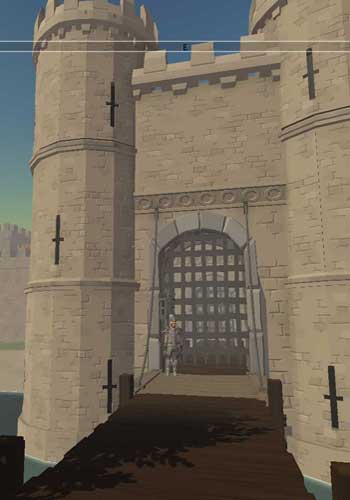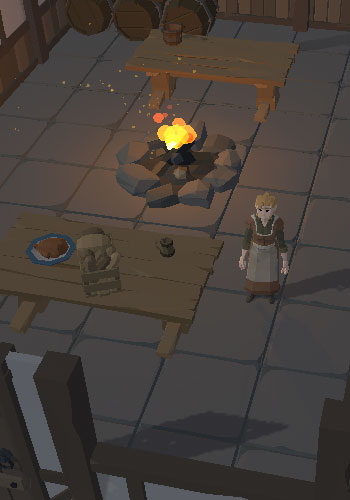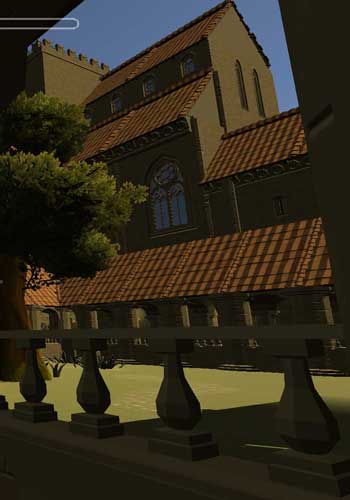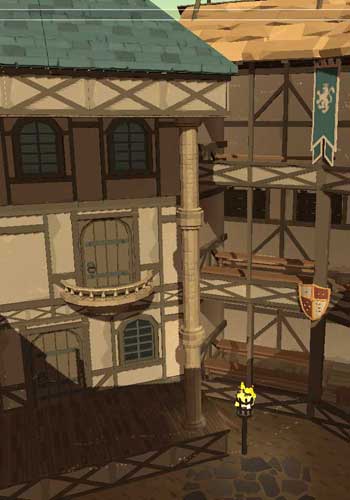
Pages in this section
- Introduction and simple keep example
- Tower of London plans and 3d model
- Middleham Castle floor plans
- Hedingham Castle floor plans
- Dover Castle floor plans
- Timeline of Square Keep construction
- Explore 3d reconstructions
Medieval Castles
Types of castles
- Early Fortifications
- Castles of William the Conqueror
- Earthwork castles
- Motte and bailey castles
- Square keeps
- Shell-Keeps
- Polygonal Keeps
- Concentric Castles
Other details
Stone castles were vital to the strategy of the Norman Kings of England for securing and governing England, ensuring both military dominance and administrative control.
Initially, William the Conqueror and his followers built motte-and-bailey castles, which were quicker to construct using earth and timber, but over time these were replaced or upgraded with stone, as stone structures were far more durable, defensible, and imposing.
Stone Keeps (1070-1150)
Click castles for more information
| Castle Name | Date | Location | Details |
| Ascot D'Oyly Castle | 1130 | Oxfordshire | |
| Castle Rising | abt. 1140 | Norfolk | Castle Rising consists on a square keep built in around 1140 in the middle of large earthworks. This is an excellent example of a twelfth century castle and its defences. The castle was built on an earlier wooden structure, probably a large hall. It was built by Lord William D'Albini who was married to the widow of Henry I, Alice (Adeliza) of Louvain. |
| Colchester Castle | By 1100 | Essex | Colchester Castle is located on the exposed East coast of the country and was needed by William the Conqueror to defend against the invading Danes. At Colchester there were the remains of a large Roman camp and temple on which it was decided to build a new castle. |
| Corfe Castle | Dorset | The date of construction of Corfe Castle is not known, and the Domesday may be making reference to it when it details Wareham Castle near by. | |
| Ogmore Castle | 1106-1116 | Glamorgan | Ogmore Castle was built by the Norman William de Londres, sometime between {y:1106} and {y:1116}, is in a remote location which was chosen to protect crossing points of the rivers Ewenny and Ogmore. |
| Pevensey Castle | Sussex | Robert, Count of Mortain, the half-brother of William the Conqueror built a castle in the south-east corner of the existing ruined Roman fort. | |
| Portchester Castle | 1120 | Hampshire | In around 1120 Henry I built a medieval castle within the walls of the Roman castle repairing the existing walls, building gates and constructing a large square keep in keeping with the fashion of the time. |
| Rochester Castle | Kent | Gundulf used existing sections of Roman walls in the construction of Rochester Castle. These were repaired and their height increased. New walls were constructed to enclose a large bailey with a ditch on the outside. Not much of Gundulf's original castle survives as it was rebuilt by William de Corbeil, Archbishop of Canterbury, sometime after 1126. | |
| Sherborne Castle | 1120 | Dorset | Sherborne Old Castle was built by Roger, the Bishop of Salisbury, and Abbot of Sherborne. Robert needed a secure home and a small hill surrounded by a lake was chosen as a suitably defendable site. The layout of the castle is roughly rectangular and has four corner towers. The main entrance to the castle is via the gatehouse in the southwest corner. |
| St. Briavels, Lydney | Gloucestershire | ||
| Tower of London | 1078 | London | About ten years after the Conquest William decided to strengthen the castle. Gundulf the Bishop of Rochester, whose building techniques were admired by William, was brought to London to design and build the new keep. The foundations were laid in 1078. |
Stone Keeps (1150 - 1200)
| Castle Name | Date | Location | Details |
| Appleby Castle | abt. 1170 | Westmoreland, Cumbria; Not open to the public | Founded by Ranulf de Meschines The main keep, known as Caesar's Tower, was built at the end of the twelfth century when the castle was a royal possession. The castle was granted by King John to Robert de Vieuxpont in 1203. |
| Bamburgh Castle | 1164 | Northumberland | |
| Brough Castle | abt. 1180 | Cumbria | |
| Brougham Castle | 1164 | Cumbria | |
| Bungay Castle | abt. 1164 | Suffolk | |
| Carlisle Castle | abt. 1160 | Cumberland | |
| Clun Castle | Shropshire | ||
| Deddington Castle | Oxfordshire | ||
| Dolwyddelan Castle | Caernarvonshire | ||
| Dover Castle | abt. 1180 | Kent | |
| Goodrich Castle | Herefordshire | ||
| Hedingham Castle | Essex | ||
| Kenilworth Castle | 1180 | Warwickshire | |
| Ludlow Castle | Shropshire | ||
| Lydford Castle | Devon | ||
| Middleham Castle | abt. 1190 | Yorkshire | |
| Newcastle Castle | abt. 1171 | upon Tyne, Northumberland | |
| Norham Castle | abt. 1160 | Northumberland | |
| Peveril Castle | abt. 1176 | Derbyshire | |
| Prudhoe Castle | Northumberland | ||
| Richmond Castle | 1171 | Yorkshire | |
| Scarborough Castle | 1158 | Yorkshire | Scarborough Castle is located high on a headland overlooking the seaside town of Scarborough. Three of its sides are protected by the steep cliffs and the sea. It was built by William de Gros, Earl fo Albemarle during the reign of King Stephen. The castle was attacked and captured by King Henry II in 1155. |
Test Your Knowledge
Page Navigation
Virtual Locations Map
Click icons to explore the reconstructions

More castle pages
Pages in this section
Types of castles








